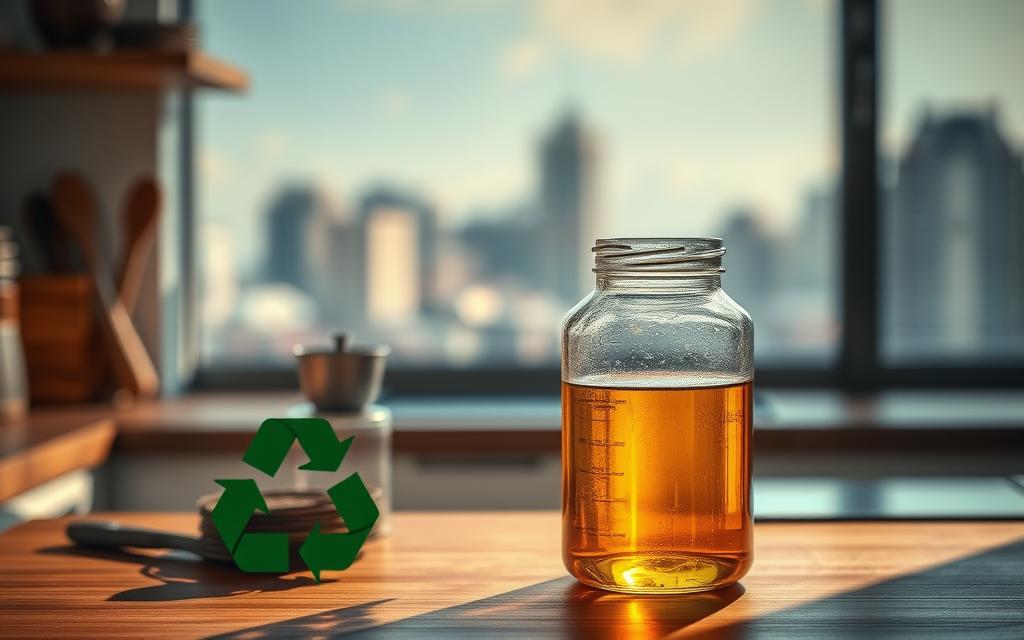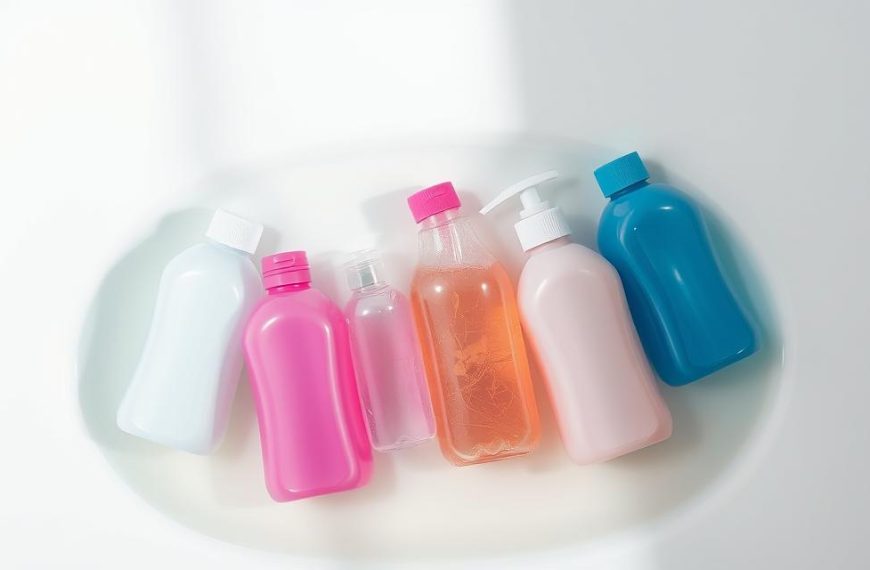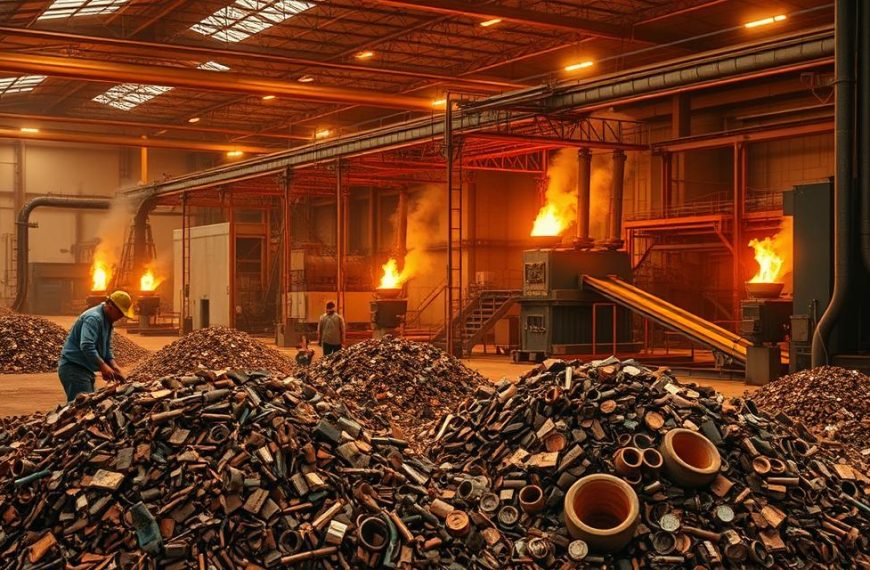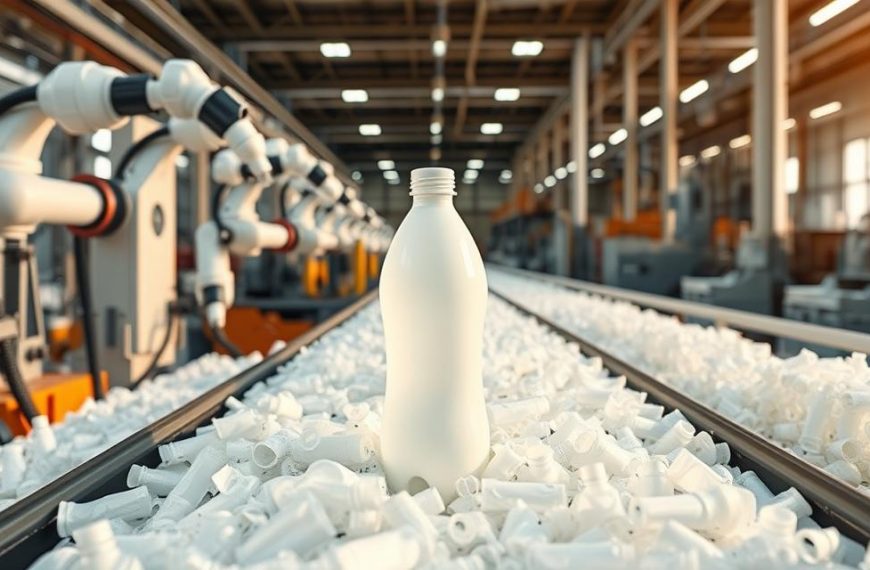Improper disposal of cooking oil can lead to serious environmental and infrastructure problems. In the U.S., nearly 47% of sewer overflows are caused by fat and grease clogs. These blockages, often called “fatbergs,” can damage pipes and increase maintenance costs for municipalities.
Recycling grease offers a sustainable solution. Instead of tossing it in the trash or pouring it down the drain, used oil can be transformed into biofuel, animal feed, or even cosmetics. Biofuel conversion alone reduces carbon emissions by up to 85%, making it an eco-friendly alternative.
Commercial kitchens can also benefit financially by recycling bulk oil. Many recycling programs pay for used grease, turning waste into a valuable resource. For individuals, finding local recycling options is easier than ever. This guide will help you discover nearby solutions and proper techniques for managing grease responsibly.
By recycling, you contribute to cleaner sewers, reduced environmental harm, and even potential cost savings. Learn more about how to recycle cooking oil and make a positive impact today.
How to Prepare Used Cooking Oil for Recycling
Proper preparation of grease ensures it’s ready for recycling and reduces environmental harm. By following a few simple steps, you can make the process efficient and eco-friendly. Let’s explore how to handle grease responsibly.
Choose the Right Container
Selecting the right container is crucial for storing grease. Metal coffee cans or plastic butter containers work well, but ensure they’re labeled clearly. Glass jars are another excellent option, as they’re durable and safe for long-term storage.
Plastic containers can crack or melt, so avoid using them for hot grease. Always let the grease cool completely before transferring it to your chosen container. This prevents accidents and keeps the container intact.
Store and Collect Used Oil Properly
Once the grease is in a suitable container, store it in a cool, dry place. Refrigeration isn’t necessary unless you plan to reuse it. For glass jars, aim to recycle the grease within three to four weeks to prevent mold growth.
For small amounts, wipe pans with paper towels before washing. This minimizes grease entering the water system. For larger quantities, consider using a dedicated storage jar.
Remove Large Food Particles
Before storing, strain the grease to remove food scraps. Use a kitchen sieve or fine-mesh strainer to filter out larger particles. This step prevents mold and ensures the grease remains clean for recycling.
If you’re unsure about the process, this guide provides detailed instructions. Proper preparation not only makes recycling easier but also contributes to a cleaner environment.
Where Can I Recycle Used Cooking Oil?
Many communities offer accessible solutions for handling grease sustainably. From seasonal programs to local services, there are multiple ways to manage grease responsibly. Below are some practical options to consider.
Use a Recycling Locator
Recycling locator tools are a great way to find nearby drop-off points. These tools often highlight seasonal collections, especially during holidays like Thanksgiving and New Year’s. Check your area’s solid waste management website for updated schedules.
Check Local Fire Departments
In some areas, fire departments accept grease for recycling. For example, Texas residents can call 800-447-2827 for details. This service helps prevent overflows and keeps grease drain systems clear.
Explore Commercial Recycling Options
For larger quantities, commercial services like DAR PRO Solutions and Greasecycle offer paid pickup. Typically, oil grease volumes of 5 gallons or more qualify. Search for “Greases” or “Rendering” in the Yellow Pages to find providers near you.
Whether you choose curbside programs or drop-off locations, proper grease management reduces environmental harm and supports recycling efforts. Take the time to explore these options and make a positive impact today.
Safe Disposal Methods for Used Cooking Oil
Properly managing grease disposal protects both your home and the environment. Incorrect methods can lead to clogged pipes, sewer backups, and costly repairs. By following these safe practices, you can avoid these issues and contribute to a cleaner community.
Seal and Dispose in the Trash
For small amounts, sealing grease in a container and placing it in the trash is a simple solution. Use a sturdy container like a metal can or glass jar. Ensure the lid is tightly sealed to prevent leaks.
For larger quantities, mix the grease with absorbent materials like cat litter. A ratio of 1 cup grease to 2 cups litter works well. This method solidifies the grease, making it safe for disposal in the garbage.
Use Absorbent Materials for Large Quantities
Absorbent materials are ideal for handling significant amounts of grease. Cat litter, sawdust, or even baking soda can be used. These materials soak up the grease, turning it into a solid mass that’s easier to handle.
Once absorbed, place the mixture in a sealed bag before tossing it in the trash. This prevents spills and keeps your garbage bin clean.
Avoid Pouring Oil Down the Drain
Pouring grease down the drain is a common mistake. It can solidify in pipes, causing blockages and costly plumbing repairs. Instead, always dispose of grease in the trash or through recycling programs.
When washing dishes, rinse them with cold hot water first. This removes excess grease before it enters the drain. For stubborn fats, wipe pans with a paper towel before washing.
| Rinsing Method | Effectiveness |
|---|---|
| Cold Water | Removes grease effectively, prevents clogs |
| Hot Water | Can melt grease temporarily, but it solidifies in pipes |
By adopting these methods, you can protect your plumbing and reduce environmental harm. Cities like Austin, NYC, and Seattle have FOG (Fats, Oils, and Grease) collection programs to support these efforts. Check your local resources for more information.
Conclusion
Sustainable practices for managing grease benefit both the environment and your community. By recycling, you contribute to an 85% reduction in carbon emissions, turning waste into valuable resources like biofuel.
For additional support, contact [email protected]. Explore the RTS blog for more tips on sustainability and compost solutions. Sharing this guide with your network amplifies its impact.
Improper disposal can lead to sewer blockages and costly repairs, averaging $200-$500. Take action today to protect your home and the planet. Together, we can make a difference.
















